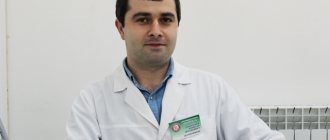Key Facts
Muscular dystonia is a syndrome characterized by slow or repeated fast movements causing rotation, flexion or extension of the trunk and limbs with the formation of pathological postures.
A characteristic feature of dystonic hyperkinesis is the occurrence or intensification of voluntary movements. Dystonic posture initially occurs only with a certain movement, but gradually becomes permanent, remaining at rest. Another feature of dystonia is the dynamism of hyperkinesis: improvement after sleep, the influence of certain “corrective gestures” and changes in posture, the influence of the emotional state.
Movement disorder syndrome in newborns: signs
Movement disorder syndrome in children has the following symptoms: as a rule, it is detected from the first weeks or even days of a child’s life and proceeds along 2 main paths.
The first way is the formation of motor disorders with a predominance of muscle hypnosis of the flexors and extensors of the limbs, convulsive readiness, increased tendon reflexes, as well as the possible appearance of pathological reflexes or long-term preservation of unconditioned reflexes. Tremors (shaking) of the arms, legs and chin may occur when crying, or the baby may scream.
The second way is muscle hypotonia with the development of muscle flaccidity, decreased tone, inhibition of tendon reflexes and spontaneous motor activity. It can be combined with difficulty in speech and mental development, poor facial expressions and articulation, late appearance of a smile, delayed visual-auditory reactions and a weak monotonous cry.
Parents should monitor such babies very carefully and be sure to consult a neurologist.
Story
The term “dystonia” was introduced by H. Oppenheim in 1911, who used “dystonia musculorum deformans” to define generalized dystonia with onset in childhood. Today, almost 100 years later, many types of dystonia have been identified, including primary (idiopathic), as well as dystonia and secondary to other diseases (symptomatic).
The prevalence of dystonia is difficult to determine. According to various data, the prevalence of primary dystonia ranges from 11.1 to 300 per 100,000.
Causes of the disease
The etiology of dystonic syndromes remains largely a mystery for modern medicine. It is only clear that they differ in nature from the more common dystonias of autonomic-vascular and neurocirculatory origin.
It is assumed that the development of dystonic syndromes is associated with disorders of brain activity at the subcellular and neurodynamic level in genetically determined dystonia and with disturbances in the sensory-motor interaction of neurons in dystonia caused by injuries to the central and peripheral nervous systems, drug toxicoses, neuroinfections, stroke or some other, more rare factors.
It is believed that primary or congenital dystonic syndromes occur twice as often as secondary or acquired ones.
Often, dystonic syndromes are combined with neuropathology of a wider spectrum or diseases of various dynamics.
In such cases, doctors use the term “dystonia plus.”
Species and types
According to the prevalence of hyperkinesis, there are:
- focal dystonia, involving a small part of the body: head and facial muscles (cranial dystonia), neck (cervical dystonia), vocal cords (laryngeal dystonia), arm or leg (limb dystonia), torso (trunk dystonia);
- segmental dystonia involving two or more adjacent parts of the body, such as the head (face) and neck or vocal cords, neck and arm, or neck and torso;
- multifocal dystonia involving two or more non-contiguous parts of the body (for example, the face and leg);
- hemidystonia involving the limbs on one side;
- generalized dystonia involving both legs (or one leg and trunk) and at least one other part of the body.
The prevalence of generalized dystonia in the world is 0.3-3 per 1 million; focal dystonia: in the USA - 40 cases per 100 thousand population, in Europe - 15-16 per 100 thousand; idiopathic blepharospasm - 3.6, spasmodic torticollis - 5.7, oromandibular dystonia (OMD) - 0.09 per 100 thousand population.
Symptoms of muscular-tonic syndrome
Muscular-tonic syndrome with a sharp muscle spasm is characterized by acute, shooting pain, while in a chronic course the syndrome more often manifests itself as aching pain and a burning sensation. In the latter variant of development, muscular-tonic syndrome, in addition to pain, may manifest itself:
- insomnia;
- decreased performance;
- apathy and depression;
- increased irritability.
Symptoms depending on the location of the muscular-tonic syndrome
Cervical muscular-tonic syndrome is characterized by:
- shooting pain in the neck;
- pain in the upper neck, radiating to the temple, part of the forehead and eye socket on the same side;
- numbness in the back of the head;
- numbness, pain and weakness in the arms due to spasm of the scalene muscles;
- tinnitus.
Muscular-tonic syndrome at the thoracic level:
- more often manifested by aching, burning pain between the shoulder blades;
- feeling of numbness between the shoulder blades;
- pain along the ribs;
- can imitate the pain characteristic of heart disease (burning sensation, compression behind the sternum).
Lumbar muscular-tonic syndrome is characterized by:
- lumbago (lumbago in the lower back);
- lumbodynia (lower back pain);
- lumboischialgia (lower back pain radiating down the back of the thigh).
Often pain in muscular-tonic syndrome is perceived as a manifestation of diseases of the internal organs. Thus, muscular-tonic syndrome of the lumbar region can be interpreted as a manifestation of renal colic. In this case, it is important to carry out additional diagnostic measures, for example, ultrasound of the kidneys, to exclude renal pathology. At the same time, renal pathology itself can initiate the development of muscular-tonic syndrome.
Focal forms
Focal forms are approximately 10 times more common than generalized forms. Common focal variants include cranial dystonia, including blepharospasm and oromandibular (orofacial) dystonia, and cervical dystonia. The combination of orofacial dystonia with hyperkinesis of other facial muscles, including blepharospasm and dystonia of the neck muscles (segmental craniocervical dystonia), is referred to as Meige syndrome.
The most common focal dystonias are:
- Cervical (cervical dystonia, spasmodic torticollis), which affects the muscles of the neck and is manifested by forced turning of the head to the side, bending forward or straightening backward.
- Blepharospasm. Damage to the muscles surrounding the eyes. Manifested by rapid, forced closing of the eyes.
- Oromandibular dystonia. It is characterized by violent contractions of the jaw and tongue, which makes it difficult to open and close the mouth and often leads to chewing and speech disorders.
- Spasmodic dysphonia. Focal dystonia affects the vocal muscles of the larynx, resulting in speech impairment. The voice may become strained, hoarse, strangled, breathy, or whisper.
- Writer's cramp. Task-related hand dystonia affecting the fingers, hands, and forearm. Occurs when trying to perform any actions with a brush, for example: while writing or playing a musical instrument.
In 80% of cases, muscular dystonia is a genetic disease (primary dystonia), although it often begins to manifest itself in adulthood. Why a genetic disease does not begin to manifest itself at birth remains unclear. It is assumed that the pathological gene begins to work only under certain conditions, under the influence of external factors.
Although the disease is genetic, dystonia rarely affects more than one member of the same family.
Muscular dystonia can also be a consequence of other reasons: taking certain drugs, toxic effects, stroke, encephalitis, etc. Muscular dystonia can also be one of the many symptoms of a progressive degenerative disease.
The diagnosis of “primary muscular dystonia” does not require additional methods of confirmation. A visual examination, history taking and clinical testing are sufficient.
Muscular dystonia
Involuntary, and in some cases, movements accompanied by pain may involve one of the muscles of a certain part of the body or several at once. Typically, patients with muscular dystonia do not complain of problems with brain activity. They also do not have mental problems.
Symptoms of dystonia
Foci of this disease can be found in different parts of the body. At the first stage, the patient may complain about poor handwriting, which becomes so after the first lines, cramps in the lower extremities, or limited movement in their muscles. Also, cramps may appear for no apparent reason or may be preceded by a short walk or run. It is possible that during illness the neck may involuntarily twist, which is often caused by load or stress. In some cases, the eyes begin to blink frequently on their own. Against this background, blindness may develop. Other symptoms that may accompany the disease include tremors and speech impairment.
At the first stage, symptoms may be mild and can be detected if the body is subjected to prolonged stress, stress or fatigue. Gradually, the symptoms begin to bother you with greater frequency and become more pronounced. However, in some cases their development may not be observed.
Some patients may encounter the disease while still a child, between the ages of 5 and 16 years. The disease usually affects the limbs. When the generalized form of the disease develops, there is a rapid development of abnormal movements, which eventually begins to spread to the legs, arms and torso. However, often as puberty passes, symptoms progress less intensely.
The disease can strike a separate group of patients already at the end of adolescence or early adulthood. Here the disease often affects the upper parts of the body. As for the symptoms, their development is not very intense. If the disease affects a person after the latter reaches adulthood, then usually its focal or segmental form is observed.
During the development of the disease, several stages can be distinguished. At first, movements begin to appear with some frequency. They are usually promoted by voluntary movements or stress. Subsequently, the person begins to take abnormal postures, and walking is accompanied by movements that are absent in a healthy person. Moreover, over time they can be observed in a state of rest. Gradually, abnormal movements cause physical defects that do not go away for a long time. The fact is that here the tendons become shortened.
If the disease strikes a person again, which can happen against the background of an injury or stroke, then he makes abnormal movements on only one side of the body. Brain injury may contribute to their occurrence. Moreover, these movements may not appear immediately. Quite often, the development of symptoms is not noted, and they do not spread to neighboring parts of the body.
Classification of dystonias
- Based on the parts of the body that are affected by the disease, the following types of dystonia can be distinguished:
- Generalized - during development, the disease affects a significant part of the body or all parts
- Focal – the disease is detected only in a specific part of the body
- Multifocal - here the disease can be detected in at least two areas
- Segmental - in this case, the disease is diagnosed on several parts of the body that are located next to each other
- Hemidystonia - here the disease develops only on one side of the body
- Also, this disease can be classified as certain syndromes.
Torsion form - some time ago it was called muscle deforming. This type of disease is encountered infrequently. Usually its development is associated with a hereditary predisposition. Often the disease develops in a person in childhood and, starting from this moment, constantly progresses.
The consequence of this form is the appearance of physical defects. After conducting research, scientists were able to establish what exactly caused the development of this form of the disease. In most patients, the DYT1 gene was altered.
Along with this, experts have found that there is a connection between this gene, in addition to the generalized one, and with other forms of the focal variety of the disease. But nevertheless, reliable information was received that the gene defect has nothing to do with the development of many forms of this disease. The reason has not yet been established.
The cervical form of the disease is a type of focal dystonia, which is diagnosed in most cases. In this situation, the disease affects the muscles that provide support to the head. The consequence of the development of the disease is twisting and turning of the head in any direction. In addition to this, the head is able to assume an inclined position. This form of the disease can affect any person, regardless of his age. However, usually after reaching middle age the first symptoms begin to appear.
The cervical form is characterized by a not too intense course; over time it begins to develop and, upon reaching a certain level, no longer progresses. In a small number of patients (10-20%), this form of the disease may be accompanied by remission, which, alas, does not last long.
Also among the forms of focal varieties of the disease is blepharospasm, which is observed in a smaller number of patients. The point is that the eyelids begin to close on their own. At the initial stage, symptoms are reduced to blinking that cannot be controlled. Often the disease affects only one eye, but then it spreads to the muscle of the second. During spasms, the eyelids remain completely closed. Against this background, functional blindness develops, despite the fact that problems with the eyes and vision may not be observed.
Cranial dystonia is often used to refer to a form of the disease that affects the muscles of the head, face, and neck. With the development of the oromandibular form, the muscles of the jaw, lips and tongue act as the affected parts of the body. Here, the jaw may move in different directions, and difficulties with swallowing and speech are possible. In spasmodic dysphonia, disturbances affect the muscles of the larynx responsible for speech. As a result, it becomes difficult for a person to speak, breathe, and hoarseness appears in the voice. Sometimes blepharospasm can be accompanied by an oromandibular form, which in medical practice is usually referred to as Meig's syndrome. In some cases, spasmodic dysphonia may develop here. It happens that the cervical form is mistaken for the cranial one.
Writer's cramp is a form of the disease where the latter develops in the wrist muscles, and in some cases affects the forearms. This form appears the moment a person begins to write. Such forms of the disease, where there is a lack of coordination, are usually called typist's cramps and musician's cramps.
Dopa is a dependent form of the disease. Its varieties include Segawa dystonia. There are no difficulties in treating her. The desired effect can be achieved by taking medications of this group (levodopa). The latter are used in the treatment of Parkinson's disease.
Typically, dopa, which is often referred to as DDD, is diagnosed in children or adolescents. Symptoms are especially severe when walking. Sometimes spasticity is also observed during illness. If Segawa dystonia develops, the symptoms can cause anxiety throughout the day: some mobility remains in the morning, but the condition begins to worsen in the afternoon and evening. In addition, physical exercise can also help with this. It is possible that DSD is detected only after some time has passed. The fact is that this form of the disease is characterized by the same symptoms as cerebral palsy.
In addition to this, it is customary to distinguish special types of the disease, the appearance of which may be associated with heredity. It is not very common to diagnose DYT1 dystonia. We are talking about a form of the disease that develops due to continuity from the generalized form. The cause of its appearance is considered to be a mutation in the DYT1 gene. Often this form of the disease is detected in children. It affects the legs and arms and begins to develop more and more over time. Subsequently, this can even lead to disability. Considering that not in every case the mutated gene manifests itself, a certain category of patients, even having a modified gene, may not experience complaints indicating dystonia.
In recent years, experts have been able to establish what other factor related to mutations in the DYT6 gene can lead to the development of the disease at the hereditary level. In this case, it is customary to talk about the development of craniofacial, cervical form or hand dystonia.
Recently, it has been possible to gain insight into most of the other genes that lead to the syndromes of this disease. Individual factors associated with hereditary predisposition come down to mutations in a number of genes:
DYT3 - the development of a disease that is related to parkinsonism is noted;
DYT5 - related to Segawa disease;
DYT6 - related to the clinical manifestations of the disease;
DYT11 - against its background, an illness develops that is related to myoclonus,
DYT12 – there is a rapid progression of the disease, which is related to parkinsonism.
Mechanism of development of dystonia
Experts say the disease is caused by problems in an area of the brain called the basal ganglia. Thanks to impulses penetrating the brain at the moment of muscle contraction, information for processing arrives at this place. There is an opinion that the body begins to synthesize a certain group of chemical substances with disturbances, thanks to which brain cells are able to establish communication with each other. Among these substances there are those that consist of:
gamma-aminobutyric acid - a special substance thanks to which the brain is able to control muscle function.
Dopamine is a chemical whose presence causes the brain to slow down in the area where movement is controlled.
Acetylcholine is a chemical substance that has an inherent activating ability. It controls the effect provided by dopamine in the brain. The consumer of this substance is the nerve endings, due to which the muscles begin to contract.
Norepinephrine and serotonin are special substances that improve the brain's ability to control the effect provided by acetylcholine.
The development of acquired dystonia occurs against the background of exposure to exogenous factors. This can also be facilitated by illnesses that affect the basal ganglia. Symptoms of the disease can occur against the background of birth trauma, certain infections, stroke and due to other reasons. At the same time, the disease may indicate the development of other ailments, some of which were inherited.
In approximately half of the cases, the disease is not related to other ailments or injuries. In such situations, it is customary to talk about the primary form of the disease. Sometimes this form can manifest itself in the form of different types of hereditary traits.
Treatment
In the modern period, it has not yet been possible to create drugs with which one could avoid the development of the disease or slow down its progression. But it is still possible to identify a group of techniques, the use of which can alleviate individual symptoms. In this regard, an appropriate course of treatment can be selected for any person, taking into account certain symptoms.
Botulinum therapy. Usually, the best way to overcome the focal form of the disease is by introducing botulinum toxin into the body. The introduction of this chemical component in small doses helps prevent muscle contraction. In addition to this, the beneficial effect also manifests itself in the improvement of abnormal postures and movements, which does not last too long. This method was used to cope with blepharospaz. Nowadays, it is usually used to treat other major forms of the disease.
The positive effect of using botulinum toxin is to reduce muscle spasm. Against this background, the release of the neurotransmitter acetylcholine, which causes muscle contractions, is not allowed. Often changes in the patient's condition occur after a couple of days from the moment the substance is administered. The effect lasts for a couple of months. Subsequently, the injections must be done again.
Drug treatment. In the treatment of various forms of the disease, excellent results can be achieved by taking a group of drugs whose effect is reduced to affecting various types of neurotransmitters. These means include
Anticholinergics - with their help, the neurotransmitter acetylcholine is no longer able to influence the muscles. This category includes drugs such as trihexyphenidyl and benztropine. It happens that there are side effects when taking them. This primarily applies to situations when they are prescribed to older people and when taken in large quantities.
Due to the presence of such negative effects, the benefits of these drugs may be reduced. To relieve dry mouth and constipation, you can make changes to your diet or take other medications.
GABAergic drugs - their effect is reduced to a change in the neurotransmitter GABA.
Benzodiazepines fall into this category. Representatives of this group of drugs can be lorazepam, clonazepam, etc. When taking them, a person may feel drowsy. Author: K.M.N., Academician of the Russian Academy of Medical Sciences M.A. Bobyr
Treatment
The vast majority of patients with both primary and secondary dystonia require treatment, most often it is aimed at the symptoms rather than at the causes of the disease.
The most common treatment for focal dystonia in the world is repeated local injections of botulinum toxin (botulinum toxin). Treatment of focal dystonias with botulinum toxin should be carried out by a neurologist who specializes and has experience in the treatment of movement disorders, therefore, throughout the world, this specialized medical care is usually assigned to outpatient clinical centers for movement disorders and botulinum therapy.
Also, various groups of drugs are used to treat dystonia, especially those spread throughout the body. Treatment is aimed at relaxing the muscles.
There are also surgical treatment methods that include stereotactic surgery and stimulation of deep brain structures - highly effective methods for treating generalized muscular dystonia and other movement disorders. Previously, before modern neurosurgical methods, peripheral operations were used (cervical radicotomy, decompression of the accessory nerve, selective denervation and rhizotomy, myectomy). However, the therapeutic effect of these peripheral influences is often temporary and is also associated with a high risk of functional impairment. Typically, surgical treatment is used in cases of persistent therapeutic resistance to other treatment methods.
Treatment options
All therapeutic measures are comprehensive and are established on the basis of hardware and laboratory diagnostic data. Drug treatment involves the prescription of drugs to restore the conduction of nerve signals - benzotropine, lorazepam, diazepam, levadopa. Nootropic drugs, for example, Cerebrolysin, nootropil, restore nutrition and metabolism in brain tissue. To improve brain activity, calcium gluconate and Semax are prescribed. To eliminate symptoms, it is advisable to prescribe muscle relaxants, antidepressants, and sedatives.
Botulinum therapy involves injecting botulinum toxin directly into spasming muscles. The drug allows you to get rid of cholinergic transmission to muscle endings for 1–1.5 months.
Physiotherapy is the main part of the treatment complex. For the purpose of relaxation and normal functioning of the muscular system, hydrotherapy, therapeutic mud applications, electrophoresis, and magnetic therapy are used. Active swimming in the pool and physical therapy are encouraged. Massage is one of the few methods that can be used to treat patients of any age.
Impaired muscle tone is successfully treated by specialists at the Center for Restorative Medicine in Naberezhnye Chelny. Based on medical history and diagnostic test results, rehabilitation specialists draw up an individual treatment plan for each patient. An experienced massage therapist has a full manual effect on the muscular system, which helps to activate the effect of medications and consolidate the results achieved during physical exercise.
The cost of rehabilitation treatment and prices for physiotherapeutic procedures are presented on the Center’s website. If you have any questions, please call us. Specialists will provide the necessary information and schedule a consultation with a specialized specialist.
Treatment of spastic torticollis
This disease is difficult to treat and, first of all, it is necessary to use drugs whose main effect is a significant reduction in muscle spasm. For a long time, tablets called muscle relaxants were used for these purposes. Their effectiveness, unfortunately, is very low, because when they enter the body, they act on all muscles, diffusely reducing their tone. At the same time, excessively spasmodic neck muscles practically do not relax.
Today, the most effective method is the use of botulinum toxin type A (Botox, Dysport, Xeomin, Relatox, Botulax), which is administered by a botulinum therapist strictly locally into the affected muscles in order to maintain the tone of the neck muscles in a position that is close to normal. To improve the result, it is recommended to do this under ultrasound control and complete the procedure with a session of peripheral magnetic stimulation.
As a result of injections, pathological signals are temporarily blocked. At the end of the effect (after 3-4 months, for some more) a second injection is given.
It is recommended to spend this time usefully - to use special therapeutic exercises for agonist and antagonist muscles as competently as possible in order to correct the incorrect dynamic stereotype. This period requires persistence on the part of both the patient and the doctor.
Varieties of the syndrome
As noted earlier, muscular dystonia is deviations in the functioning of individual muscles or muscle groups, which are manifested by excessive stiffness, limitation of motor activity, and uneven tone. In this regard, there are two main forms of the disease: hypertonicity and hypotonicity. With hypertonicity, increased muscle tension is noted, and with hypotonicity, decreased muscle tension.
The disease is classified into several forms according to localization and extent of spread:
- Local. Covers a small area of the body, only one muscle or muscle group is involved. Another name is focal.
- Segmental - several parts of the body that are nearby are involved. Manifestations of dystonia are observed in several muscle groups.
- Multifocal. Multiple body parts that are not adjacent to each other are involved.
- Hemidystonia - occurs in the muscles of one half of the body.
- Generalized – the whole body is involved, symptoms can appear in any muscle group, despite the fact that there is usually a predominant one.
Focal dystonia is more common than other forms. There are also several types of them:
- Cranial. It manifests itself as blepharospasm - the so-called involuntary squinting of the eyes. Along with this, other symptoms are also present.
- Pharyngeal (another name is laryngeal).
- Cervical.
- Occupational dystonia, which occurs with severe muscle tension.
Focal dystonias most often occur in adults of working age. Symptoms of the disease reduce the quality of life, contribute to a decrease in performance, and increase the risk of social maladjustment and disability. The syndrome often leads to the formation of functional defects - for example, visual disturbances with blepharospasm up to functional blindness, difficulty holding the head in the cervical form of the disease. Therefore, treatment is aimed not only at eliminating symptoms, but also at restoring and maintaining body functions.
Diagnosis of the syndrome
Manifestations of dystonia overlap with symptoms of other neurological diseases. Therefore, diagnosis consists of consistently excluding all possible diseases. It is important not only to establish the form of the disease, but also to find the cause of the disease. So, if the disease is provoked by taking specific drugs, it is advisable to stop the course, but there is no need for specialized treatment.
Basic diagnostic criteria for diagnosis:
- At an appointment with a neurologist, the presence of postures or movements typical for dystonia is determined.
- A therapist or attending physician will assess the birth of the mother, collect data on the early development of the child - it is quite possible that the symptoms appeared earlier, and have specific prerequisites for the development of the disease.
- Testing for diseases associated with dystonia.
- Testing for a course of medications that may cause symptoms.
In addition to collecting anamnesis, various instrumental and laboratory studies are carried out:
- Metabolism study - copper metabolism.
- EEG is electroencephalography, which immediately allows you to exclude or confirm organic and functional pathologies of the brain.
- and MRI - prescribed in cases where other diagnostic tools were not enough.
Treatment is prescribed based on diagnostic results.
Causes and prerequisites of the disease
The main reason is birth trauma or congenital brain injuries. If blood circulation in the brain is disrupted during pregnancy or childbirth, oxygen starvation occurs.
In adults, it is more difficult to determine the cause of the disease. Sometimes muscular dystonia develops while taking various medications, after traumatic brain injury, and dystonia caused by degenerative hereditary diseases may appear late. Very often, adult patients are diagnosed with idiopathic dystonia - that is, of unspecified etiology.
At CELT you can get advice from a neurologist.
- Initial consultation – 4,000
- Repeated consultation – 2,500
Make an appointment
Reasons for the development of dystonia in children
The main reason that provokes the manifestation of dystonia in babies is perinatal encephalopathy, which occurs during the period of intrauterine development or at the time of birth of the child.
The following problems can cause damage to the newborn’s brain during the mother’s pregnancy and the birth of the baby:
- placental abruption;
- viral infections in a pregnant woman;
- long-term toxicosis when expecting a child;
- threats of miscarriage;
- alcohol and nicotine effects on the fetus during pregnancy;
- polyhydramnios;
- diabetes mellitus in a pregnant woman;
- frequent stress in the expectant mother while expecting a baby;
- chronic fetal hypoxia;
- the impact of negative factors on the pregnant woman’s body and fetus, for example, certain medications;
- waterless period for a long time;
- rapid or too long labor;
- caesarean section and the use of general anesthesia during surgery;
- stimulation of labor;
- heavy bleeding during childbirth;
- hypoxia or asphyxia of the fetus;
- entwining the fetus with the umbilical cord.
Most often, the root cause is difficult to identify, so in most cases a general diagnosis is made without specifying the cause and treatment is aimed at eliminating the alarming symptoms.








